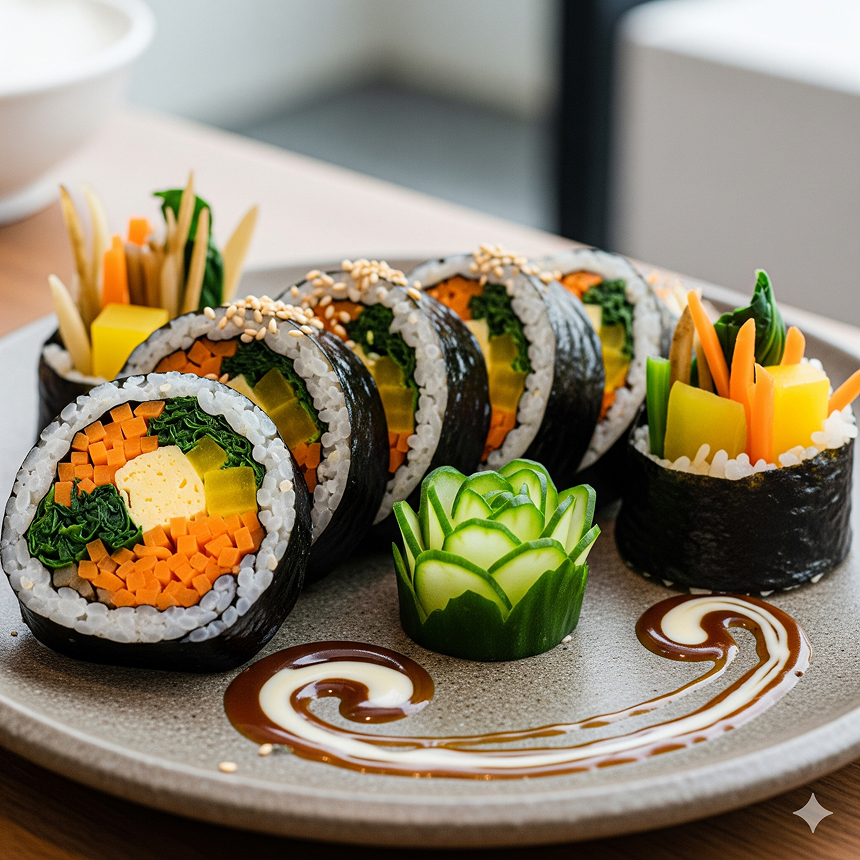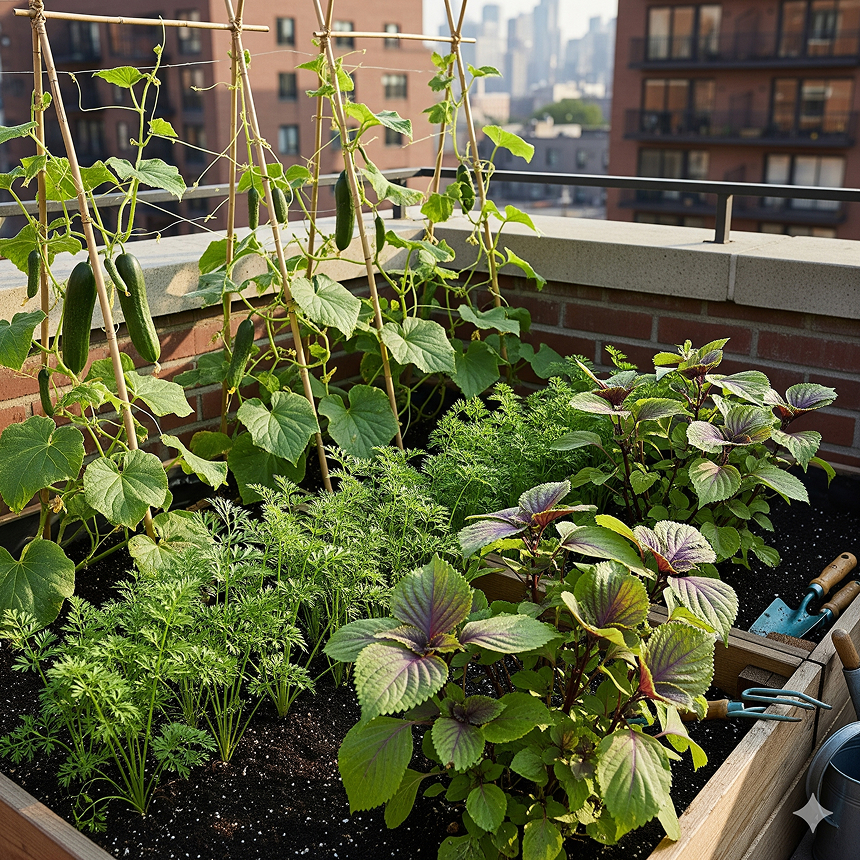Published on September 20, 2025
There’s an undeniable joy and sincerity in cooking with ingredients you’ve nurtured yourself. This recipe celebrates that spirit by transforming your home garden harvest into Vegetable Gimbap, a healthy, portable, and deeply satisfying meal. Using freshly picked cucumbers, carrots, and aromatic perilla leaves elevates this Korean classic far beyond the ordinary.
The Health & Joy of Homegrown Gimbap
Making Gimbap with homegrown vegetables isn’t just a culinary act; it’s an extension of a healthy lifestyle.
- Nutrient Density: Vegetables harvested at their peak—like those fresh from your garden—retain the highest concentrations of vitamins and antioxidants. For instance, carrots are richest in beta-carotene (Vitamin A), and perilla leaves (Kkaetnip) are packed with calcium and iron.
- The Sincerity Factor: Tending a garden, no matter the size, is a proven stress reliever. The act of harvesting and immediately preparing your food provides a unique psychological satisfaction, directly connecting you to the source of your meal.
- Enhancing the Gimbap Experience: The garden’s reward is superior texture and flavor. Freshly picked cucumbers offer an unparalleled crispness that perfectly contrasts the soft rice and savory fillings.
Vegetable Gimbap: Recipe for a Healthy Roll
This recipe focuses on simple preparation methods to highlight the natural flavors of your fresh vegetables.
| Ingredient | Quantity (for 2 rolls) | Preparation Detail & Nutritional Insight |
| Cooked Rice | 1.5 cups | Recommendation: Use a mix of brown and white rice (70%/30%) for added fiber and sustained energy. Season while warm with salt, sesame oil, and sesame seeds. |
| Gimbap Seaweed (Gim) | 2 sheets | The wrapper; rich in iodine and marine minerals. |
| Fresh Cucumber | 1/3 medium | Cut into long strips. Crucial Prep: Lightly salt and squeeze out excess water to maintain maximum crunch and prevent the roll from getting soggy. |
| Fresh Carrot | 1/4 medium | Cut into thin strips. Sauté briefly in a touch of oil with a pinch of salt. Cooking the carrot slightly softens it and enhances beta-carotene absorption. |
| Perilla Leaves | 6-8 leaves | Wash thoroughly and pat dry. Their unique, minty, anise-like flavor provides a fresh, aromatic layer. They are a powerhouse of calcium. |
| Pickled Radish (Danmuji) & Burdock Root (Ueong) | To taste | These provide the necessary tangy, crunchy, and savory core that defines traditional Gimbap. |
| Seasoning | A pinch each | Salt, sesame oil, sesame seeds for seasoning the rice. |

Instructions for Rolling Perfection
- Prep and Season the Core Components: Follow the steps above, ensuring the rice is seasoned well. The salt/sesame oil mix is vital as it not only flavors the rice but also acts as a natural adhesive to keep the roll together.
- Assemble the Base: Lay the seaweed on a bamboo mat (Gimbal). Spread a thin, even layer of seasoned rice, leaving a 1-2 cm margin at the top edge. This margin will be moistened later to seal the roll.
- Layer the Filling: Arrange the vegetables (cucumber, carrot, perilla leaves) and the preserved fillings (pickled radish, burdock root) neatly in the center. The perilla leaves should be layered first or last to ensure their flavor remains distinct.
- The Tight Roll Technique: Starting from the edge closest to you, roll the mat up, applying firm, even pressure. After each full turn, pull the mat back slightly to compress the roll. This professional technique prevents the Gimbap from unraveling when sliced.
- Finish and Slice: Brush the completed roll with a small amount of sesame oil—this adds a beautiful sheen, enhances the nutty aroma, and prevents the seaweed from drying out. Slice using a sharp, damp knife for clean, uniform pieces.
Continuing the Garden-to-Table Journey
Your bountiful harvest presents endless culinary opportunities.
- Expand Your Gimbap Fillings: Consider adding other homegrown ingredients like thinly sliced and stir-fried zucchini (hobak), quickly blanched and seasoned spinach (sigeumchi), or even homemade pickled ginger for a zestier kick.
- Other Dishes with Your Harvest: Your key Gimbap ingredients are versatile staples:
- Cucumber: Use it for Oi Muchim (Spicy Cucumber Salad) or chilled Naengguk (Cold Cucumber Soup) in the summer.
- Perilla Leaves: Try them as a Ssam (wrap) for grilled meat or make Kkaetnip Jeon (Perilla Leaf Pancakes) for a unique appetizer.
What other healthy, comforting Korean or Asian dishes have you found pair best with your garden-fresh vegetables?

